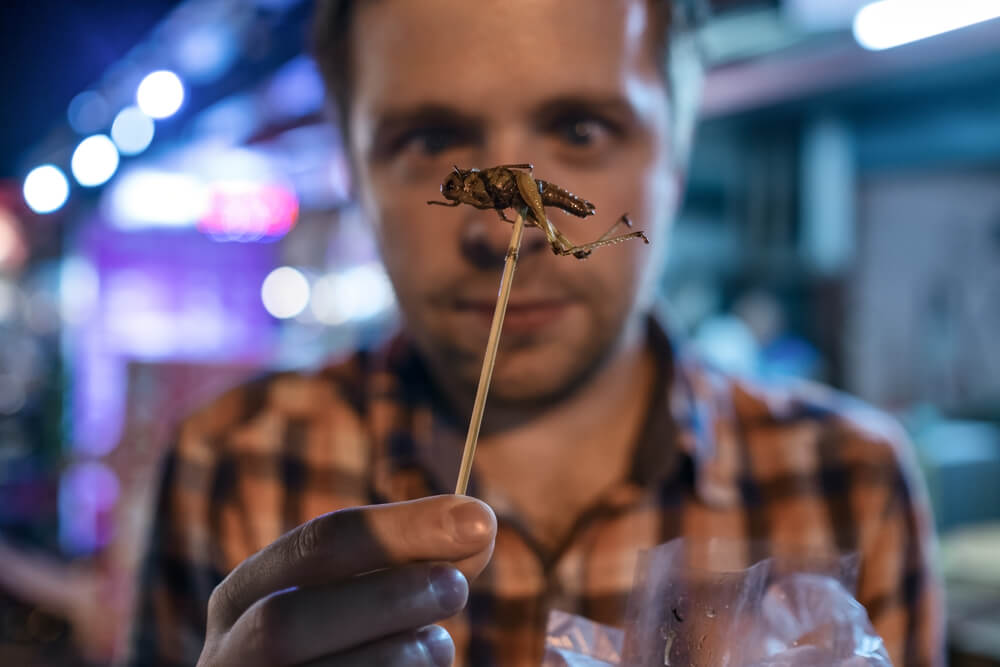“R. M. Renfield, aged 59. Sanguine temperament, great physical strength, morbidly excitable, periods of gloom, ending in some fixed idea which I cannot make out. I presume that the sanguine temperament itself and the disturbing influence end in a mentally accomplished finish, a possibly dangerous man, probably dangerous if unselfish.” – John Seward.
It’s rare, even in the modern era, that one refers to a 59 year old man as either having great physical strength or of being “possibly dangerous”, provided his name isn’t John Grimek and he’s not carrying a loaded firearm. RM Renfield, however, was both, in an era when life expectancy in the United States was right around 45 years. Sure, you might say, but RM Renfield (the nutjob thrall to Count Dracula in the Bram Stoker novel) wasn’t a real person, so this conversation is about as useful as pixelated Japanese pornography. Not so, however, because I’m going to take a leap of logic and ascribe the great strength and dangerous nature of Renfield’s character not to a flight of fancy, but rather to his diet.
Anyone who’s seen a Dracula movie is familiar with Renfield’s diet- he’s the dude crazier than a bag of wet cats eating mealworms in the lunatic asylum. Tom Waits apparently munched on one in the filming of the cinematic travesty Bram Stoker’s Dracula, and though that had most viewers in the West recoiling in horror, it happens that 80% of the world’s population eats insects as a part of their regular diet. In fact, it’s only the pinkies-up-when-quaffing-our-champagne developed Western world that doesn’t partake of our exoskeleton-clad friends, as we can afford far more expensive protein sources than insects (Michels).
The practice of eating arthropods (non-seafaring ones), which modern science refers to as entomophagy, is shared by all primates and is ubiquitous to every corner of the world. Over 3,000 ethnic groups around the world are known to engage in this practice, and the number of creepy-crawlies they eat makes the “diversity” of my own diet seem laughable- I never even considered the fact that there was over 1,400 species of meat-sicles for me to eat, but then I despise seafood and generally stick to beef and chicken (Ramos-Elorduy 13, 44). As you might have noticed by my qualification, most people are already used to eating one type of arthropod- crustaceans. The other three types, insects, spiders/scorpions/horseshoe crabs, and trilobites, are all related edible species. Well, one would assume trilobites would be edible, but they’re extinct. In any event, eating arthropods is hardly unknown in the West.
The Club of Rome is Full of good news. Don’t worry- this is how we’re going to hang onto our gains in the coming apocalypse.
Though it’s become very popular among the effete and the “green” to advocate the consumption of insects as a protein source, just as the Club of Rome nuts advocated soy as the savior of all mankind in the 1970s, Western authors have been advocating for the consumption of insects at least as far back as the 1880s, with the publication of Why Not Eat Insects?
As many of us in the strength community, at least those in the know, are averse to faddism, one might otherwise shy from a discussion about insects as a protein source- once something is advocated in the New Yorker, most skeptics turn a blind eye. This concept, however, has both precedent and merit, as the consumption of insects is so common and in many cases lauded. Why then, do we shun the the creepy crawlies all around us as a food source?
Damned if I know, because by all accounts, insects are good eating. “Because of their exoskeleton most insects give off very little odor and, therefore, smell has little influence on palatability. Conversely, this same shell greatly influences texture. Insects are crunchy and the act of chewing, couples with the resulting salivation, carries with it great oral satisfaction, like the pleasure of eating pretzels or crackers. The exoskeleton is chewable and is an excellent source of fiber” (Ramos-Elorduy 16). After spending time in Cambodia, Angelina Jolie stated that her kids were eating crickets “like Doritos” because they loved them so much (Angelina), and the wealthy housewives of Mexico City flock to upscale restaurants for a dish referred to as “Mexican Caviar”, which is boiled ants’ eggs (Armstrong). Dubious? This dish, known as escamoles, was selling for $25 a plate in 1999, which means it’s running closer to $35 these days if one adjusts for inflation (Defoliart 36). White “gusanos”, or maguey worms, which are larvae of the skipper butterfly, sell for the same price, and the harvesters of those two insect dishes are the richest people in rural Mexico (Defoliart 37). Apparently, eating bugs the bee’s knees.
I am psychically sensing that no one is as yet on board with this idea. Would it help to know that ancient Romans, conquerors of the Western World, ate snails and referred to grasshoppers, which were eaten incredibly frequently, as ‘four-legged fowl'” (Brothwell 66, 70)? Or that ancient Greeks, rampaging through East Asia on an empire-building mission led by the inimitable Alexander, thought cicadas were one of the world’s great delicacies (Brothwell 70)? Eating snails in the desert could keep you alive in lieu of finding a water source, as a snail common to Libya, the Eremina, would be sufficient to enable survival for days if eaten in sufficient quantity (Brothwell 67). Not in the desert but trying to get ripped? Fried termites are the ultimate keto food- their exoskeletons provide fiber, and the rest of them is 44% fat and 36% protein, and rocks hard as a caloric belly bomb at 560 calories per 100 grams (Brothwell 68). On a hike through the desert, leaving the granola at home and bringing a big bag of snails and another of fried termites would have you crushing trails like you’re a one man Badwater Ultramarathon.
I realize that this is, quite literally, hard to stomach- the thought of eating insects is more repellent than Edward James Olmos’s acne scars. I can attest, however, to the fact that ants taste pretty awesome. In a hilariously failed effort to get small children to leave me alone at a backyard party- I tried to gross them out by eating ants. I ate a hell of a lot of them. Instead of grossing them out by eating what essentially taste like tiny little lemonades, the little bastards decided I was officially the coolest adult on Earth, and they proceeded to collect a wide array of bugs for me to eat. As I had no interest in having a live grasshopper in my mouth, I declined. The memory, however, still serves to remind me that bugs taste better than you’d think. According to people braver than I, here’s what the most popular edible insects taste like:
If I were trying to sell beetles to people as food, this is not the poster child I’d pick. Nevertheless, there aren’t many picks of Westerners happily munching beetles, so you people will have to settle for a forlorn Sub-Saharan African.
- Beetles. Most beetle larvae taste like pork rinds, and those from aquatic environments have a fishy flavor (Ramos-Elorduy 20-21). One type of beetle, the sago palm weevil, is supposed to taste exactly like bacon (Strochlic).
- Butterflies and moths. These are, thankfully, always eaten in the larval or pupal stage. Their flavor depends on the environment where they lived and the manner in which they’re prepared- some taste like chicken, others like codfish and herring. The white agave (the worm at the bottom of bottles of mescal) is the most popular insect in the world from a luxury standpoint- a kilo of them costs $32-$35 (Ramos-Elorduy 21). Like the white agave in South America,caterpillars are considered delicacies in
southern African countries. Because it eats nothing but bee wax and honey, the wax moth caterpillar / wax worm, apparently tastes like an enoki mushrooms mixed with pine nuts (Strochlic). - Bees, wasps and ants. Wasps are known for their pine nutty flavor. Bees, however, range in flavor from pine nuts, peanuts, or almonds. Ants are almost always nutty, though certain species have a citrusy flavor (Ramos-Elorduy 23)
-
Grasshoppers, crickets, and locusts.Grasshoppers
are the most consumed type of insect in the world, and their flavordepends entirely on their method of preparation (Ramos-Elorduy 24). Some people describe cooked locust as similar to smoky bacon, which most of you should get excited about (Dubois). Africans call them “desert shrimp”, though, and claim they taste quite a lot like the locust’s sea faring cousin (Murray). There, the dip fried locusts in a
chili powder called yaji (the recipe for that is here),
and it’s basically become one of the most sought-after protein sources in Nigeria in recent years. As such, I’d start here or with ants and a bunch of sriracha. - Flies and mosquitoes. The flavor of flies depends on where they were raised. Flies raised on cheese (like in Sardinia) taste like cheese, while ones from water environs taste like duck. Fresh mosquitoes taste like fish (Ramos-Elorduy 24)
- Water boatmen and backswimmers. I grew up calling these things water striders, but irrespective of what you call them, their eggs are known as Mexican caviar and taste like fish when fresh and shrimp when dried (Ibid)
- Stink bugs. Horrible as it would seem to eat one of these noxious monstrosities, they’re damn good for you. They possess anesthetic and analgesic properties and add an apple flavor to sauces. Additionally, they contain iodine, which is awesome for people in regions where it is not readily available (Ibid). Just don’t eat them raw, or the toxins they contain might kill you.
- Witchetty (witjuti) grubs. Apparently these are only found in the land of Crocodile Dundee, but the larva of the cossid moth has been a staple in the diets Aborigines for centuries. These little high protein, mobile boogers taste like almonds, and when cooked the skin becomes crisp like roasted chicken (Food).
- Tarantulas. Having seen wolf spiders up close, all I can think when approached by a spider as big as my fist, all I am capable of is complete arachnid destruction. For those of you who can stave off the “destroy everything” Hatebreed-esque respond and just stick to simple
murder, tarantulas are said to taste like to soft-shell crab or shrimp (Strochlic). As I hate seafood almost as much as spiders, I’ll leave that to you lunatics to test.
What’s weird in the above list is that the favorite of internet weirdos, paleo outliers, super-green non-vegan psychopaths, and every bizarre foodie on Earth is the mealworm. When looking for Thanksgiving Day recipes, I happened upon 10,000 recipes involving mealworms, for no reason whatsoever. Mealworms are apparently the business. They can be eaten live, they can be pan-fried, or you can do what most people do- dry-roast those nasty little sons of bitches. Dry roasted mealworms would make for excellent post-apocalyptic food if nothing else- roasting removes most of their moisture and retains all of their nutrition. On top of that, they apparently taste just like peanuts, but lack the allergens that have housewives all over America crapping their collective pants (even though it’s half as common as bee sting allergy), and their macro nutrient and amino acid profiles ball harder than P Diddy in a room full of ATMS and big bootied white women. Mealworm meat compares incredibly favorably with red meat, as mealworms average between 45-55g protein, 40-57g fat, and 1.4-2.3g fiber per 100g of dry weight. As for aminos, they contain more of all amino strength trainers care about (especially leucine) than beef:
As I don’t own anything ironically, don’t wear tweed, and cannot stand indie rock, I’ve not yet tried eating mealworms. Since I lack that hipster street cred, I’ll just relay the preparation methods for mealworms I’ve found in case you’re curious:
“DRY ROASTED MEALWORMS CAN BE SALTED OR DIPPED IN CHOCOLATE AND EATEN AS A SNACK, SPRINKLED ON SALADS, AND ADDED TO SOUP. THEY TASTE A LOT LIKE PEANUTS AND CAN REPLACE NUTS IN COOKIES, CAKES, AND OTHER DESSERTS. SINCE ROASTED WORMS ARE BRITTLE, THEY CAN BE GROUND AND MIXED WITH FLOUR WHEN YOU BAKE MUFFINS, PANCAKES, OR BREAD. THE DIFFERENT WAYS THESE INSECTS CAN BE ADDED TO RECIPES IS ALMOST LIMITLESS.
HOW TO DRY ROAST MEALWORMS PLACE YOUR LIVE MEALWORMS IN A COLANDER AND TOSS AND RINSE THEM UNDER COOL WATER. THIS IS TO REMOVE ANY FOOD AND SUBSTRATE FROM THE WORMS. BE SURE TO PICK OUT ANY DEAD WORMS OR PUPAE. PAT THE WORMS DRY WITH PAPER TOWELS, PLACE THEM IN A CONTAINER OR PLASTIC BAG, AND PUT THEM IN THE FREEZER FOR ABOUT FIFTEEN MINUTES. THIS WILL QUICKLY KILL THE WORMS.
SPREAD THE MEALWORMS OUT EVENLY ON A NON STICK COOKIE SHEET. IF YOU ARE WORRIED THAT THE WORMS MAY STICK, YOU CAN LIGHTLY GREASE THE SHEET. PLACE THE WORMS IN AN OVEN AT 200 DEGREES AND BAKE THEM FOR ONE TO TWO HOURS UNTIL THEY ARE DRY AND CRISPY. SOME PEOPLE DO NOT LIKE THE SMELL OF BAKING WORMS AND PREFER TO COOK THEM OUTSIDE ON A GAS GRILL SET TO A LOW TEMPERATURE” (MEALWORM).
If worms aren’t your bag, it’s not just mealworms that crush red meat in a battle to protein overdose induced kidney-failure death- insects in general hand beef and chicken a pretty stout ass whipping. They’re crazy high protein, keto-friendly, paleo-friendly, organic, naturally fed, free-range, and the only carbs they contain are fiber, so they have no chance of throwing you out of ketosis.
For most of you, this will have absolutely no impact on your life- you’lljust carry on eating the same poorly fed, poorly treated, factory farmed animals… as will I, likely. This information is likely going to fall into the “good-to-know” category, then, but if you ever find yourself in a situation wherein you’re heading face first into catabolism without a helmet fashioned from an array of protein bars, you know you can get your anabolism on ancient Greek and Roman style. One thing to note, however, is that not all insects are edible. Though the list I’m about to give you (Bryant, “How”, seems pretty much a full listing of insects, it’s apparently not. I’m not an entomologist and don’t pretend to play one on TV, so I’m not even going to make an attempt to help you identify the safe ones.
They are, however:
- Anoplura – lice
- Orthoptera – grasshoppers, crickets and cockroaches
- Hemiptera – true bugs
- Homoptera – cicadas and treehoppers
- Hymenoptera – bees, ants and wasps
- Diptera – flies and mosquitoes
- Coleoptera – beetles
- Lepidoptera – butterflies and moths
- Megaloptera – alderflies and dobsonflies
- Odonata – dragonflies and damselflies
- Ephemetoptera – mayflies
- Trichoptera – caddisflies
- Plecoptera – stoneflies
- Neuroptera – lacewings and antlions
- Isoptera – termites
Given that most of us couldn’t tell a caddisfly from a sparrow, you might want to bear in mind the following little rhyme if you decide to much on bugs:
“RED, ORANGE YELLOW, FORGET THIS FELLOW.
BLACK, GREEN OR BROWN, WOLF IT DOWN”
(BRYANT, “ENTOMOPHAGY”).
It’s also best to avoid eating overly colorful bugs or bugs with a strong odor (Bryant, “Entomophagy”), as that sort of gay pride parade style flamboyant is intended to warn predators they’ll get wrecked if they try and mess with the bugs. If that’s all you have for eating, just boil, roast, or smoke the bug. Boiling is the safest way to kill of toxins, but roasting or smoking should serve the same purpose, and any kind of cooking will vastly improve the taste and texture (Bryant, “Edible”).
So there you have it. Bugs, they’re what’s for a ketogenic, paleolithic, green, socially conscious dinner.
Sources:
Angelina Jolie admits her children eat insects. Mai FM. 20 Jul 2011. Web. 4 Sep 2014. http://www.maifm.co.nz/Angelina-Jolie-admits-her-children-eat-insects/tabid/76/articleID/1402/Default.aspx
Armstrong, Hilary. Ant’s eggs, Mexico. MSN Travel. Web. 4 Sep 2014.
http://travel.ca.msn.com/international/photogallery.aspx?cp-documentid=23957391&page=17
Brothwell, Don R.
Food in Antiquity: A Survey of the Diet of Early Peoples. New York: Prager, 1969.
Bryant, Charles W.. “How Entomophagy Works” 15 April 2008. How Stuff Works. Web. 3 September 2014.
http://people.howstuffworks.com/entomophagy.htm
Bryant, Charles W. How can I tell if a bug is edible? How Stuff Works. 14 April 2008. Web. 8 Sep 2014.
http://adventure.howstuffworks.com/survival/wilderness/edible-bug.htm
DeFoliart GR. Insects as food: Why the Western attitude is important. Annu. Rey. Ennmol. 1999;41:21-50
Dubois, Sirah. The Nutritional Value of Locusts. Livestrong. 24 Oct 2011. Web. 3 Sep 2014.
http://www.livestrong.com/article/549444-the-nutritional-value-of-locusts/
Food and Agriculture Organization of the United Nations. Edible
Insects: Future Prospect for Food and Feed Security. Fao Forestry
Paper. Aug 2013;171:67-89.
http://www.fao.org/docrep/018/i3253e/i3253e06.pdf
Mealworm Care. Web. 3 Sep 2014.
http://mealwormcare.org/recipes-nutrition/
Michels, Spencer. Bugs for dinner? PBS. 7 May 2012. Web. 2 Sep 2014.
http://www.pbs.org/newshour/rundown/bugs-for-dinner/
Murray, Senan. In pictures: Desert shrimps. BBC News. Web. 3 Sep 2014.
http://news.bbc.co.uk/2/shared/spl/hi/picture_gallery/07/africa_desert_shrimps/html/7.stm
Nutritional Value of Various Insects per 100 grams. Iowa State Entomology Department. Web. 3 Sep 2014.
http://www.ent.iastate.edu/misc/insectnutrition.html
Ramos-Elorduy, Julieta.
Creepy Crawly Cuisine. Rochester: Park Street Press, 1998.
Siemianowska












2 comments
Joseph Donahue
Hello! Would you mind if I share your blog with my myspace group? There’s a lot of people that I think would really appreciate your content. Please let me know. Many thanks
UpdateLand
Ashley Jones
Hello There. I found your blog using msn. This is an extremely well written article. I’ll make sure to bookmark it and return to read more of your useful information. Thanks for the post. I’ll definitely return.
Leave a comment
All comments are moderated before being published.
This site is protected by hCaptcha and the hCaptcha Privacy Policy and Terms of Service apply.